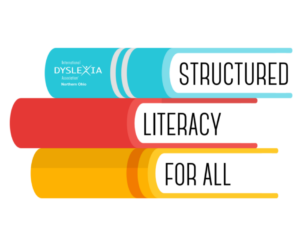
Structured Literacy is defined as a comprehensive approach to literacy instruction that research has shown to be effective for all students and essential for students with dyslexia. It is also beneficial for English learners (Baker et al., 2014; Gersten et al., 2008; Kamil et al., 2008; Vaughan et al., 2006).
Programs that use structured literacy as their foundation are those advised for use in OH schools as districts begin to implement HB 436.
Visit our HB 436 page to learn more about the specific requirements.
As an organization, we know that a Structured Literacy Curriculum follows the Science of Reading research, aligns with IDA Knowledge and Practice Standards, and is accredited by IDA, IMSLEC, ALTA, or AOGPE.
Structured Literacy addresses all aspects of literacy in an explicit, systematic, cumulative manner.
It is diagnostic, prescriptive, and comprised of the following components:
- Phonology to include phonemic awareness
- Sound -Symbol Association
- Syllables
- Morphology
- Syntax
- Semantics
For more information about the framework of Structured Literacy refer to IDA of Central Ohio’s Roadmap 1.0 document.
This document serves as a guide for school districts as they teach students with dyslexia and was created by the IDA of Central Ohio.
Visit our Resources Page to find multiple, helpful tools to learn more about Structured Literacy and, specifically, our Fact Sheets that offer a wealth of knowledge on this topic!
Share this page with your friends…

